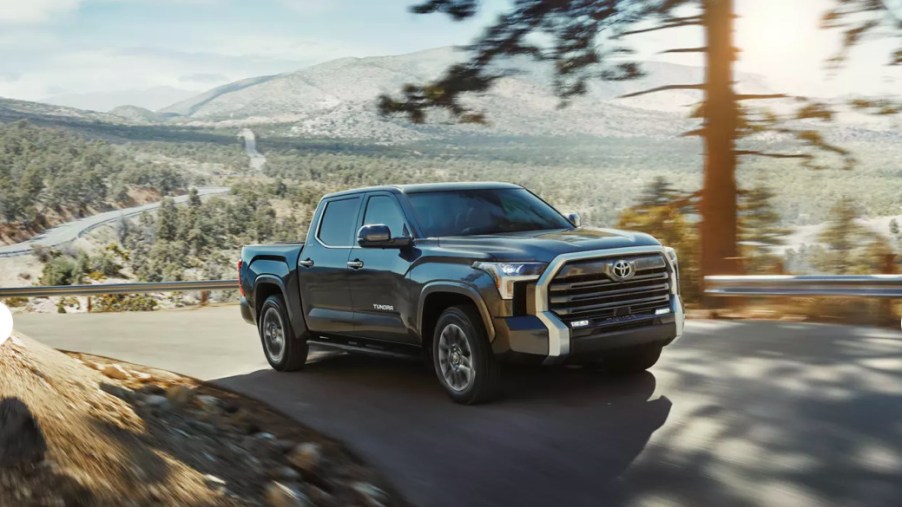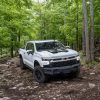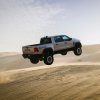
Toyota Tundra vs. GMC Sierra: Why Isn’t the Tundra More Popular?
Full-size pickup trucks are everywhere these days, and Toyota isn’t missing out on the action. Its 2023 Tundra isn’t missing out on the action, with splashy marketing attempting to place it at the top of the category. The Japanese automaker isn’t making much headway in the Tundra vs. Sierra matchup despite their herculean efforts, though.
So why can’t the Tundra keep up? Is it about the quality of the vehicle itself, or is there some deeper reason that buyers frequently opt for the competition? Let’s dive into the details and find out.
The Toyota Tundra struggles to sell anywhere close to the GMC Sierra
First, let’s take a look at how big the popularity gap between the Tundra and Sierra really is. GoodCarBadCar reports that the Sierra’s year-to-date sales so far are up to 143,008. It’s nowhere close to the full-size truck standby, the Ford F-150, which has moved 382,893 units across all trims so far, but it’s respectable.
The Tundra lags far behind both. With just 59,735 units sold, it exists in a totally different sales category from the top of the heap that the Sierra inches toward. When prospective buyers go looking for a big, reliable, powerful truck, they seem to shy away from Toyota in a way they don’t for other automobile categories.
How the Tundra stacks up to the Sierra in 2023
Comparing the 2023 Tundra with the 2023 Sierra 1500 paints a picture of two very similar trucks, according to Edmunds. Both are in a similar price range at higher trims, with the Sierra at $65,700 MSRP while the Tundra runs a bit more affordable at $60,360. Both have roomy double cabs, with plenty of legroom. And their dimensions are extremely close.
The Tundra is slightly more fuel efficient, with 18 MPG in the city and 23 MPG on the highway. That puts it at two miles more efficient in both environments compared to the Sierra. With no full-time four-wheel drive, though, it’s clear that drivers who intend to put their vehicle to work often might prefer the Sierra.
But the biggest difference is in the styling. The Sierra has the classic American big truck look: chunky, squared-off look. The Tundra makes a point of differentiating itself with a sleek, heavily-accented look that splits the difference between modern appeal and the old-school full-size truck style.
Does the sales gap between the two reflect the quality of each pickup?
There are two key reasons that likely explain the Tundra’s struggles against the Sierra: power, and aesthetics. The other contrasts between the two trucks are relevant too, of course. Price still matters, even with demand outpacing supply for both vehicles. And the brand reputation factor in the large truck category likely explains quite a few of those extra sales the Sierra enjoys.
But, regardless of how people will use their trucks in the day-to-day, power matters in this category. And the V8 in the Sierra looks better on paper than the V6 that comes standard with the Tundra. According to Autoweek, this and the lack of full-time four-wheel drive help with fuel economy but limit towing and hauling performance.
And yes, looks matter. Toyota’s attempt to appeal to a slightly different niche than the American competition might be off-putting to many potential buyers. The Sierra keeps things austere, blucky, and intentionally projects a classic image that pickup drivers are deeply familiar with.
The Tundra takes a risk, and it may pay off in the long run. But for now, it’s invitingly rounded, lightly futuristic accents might not be what the average truck buyer is looking for.


